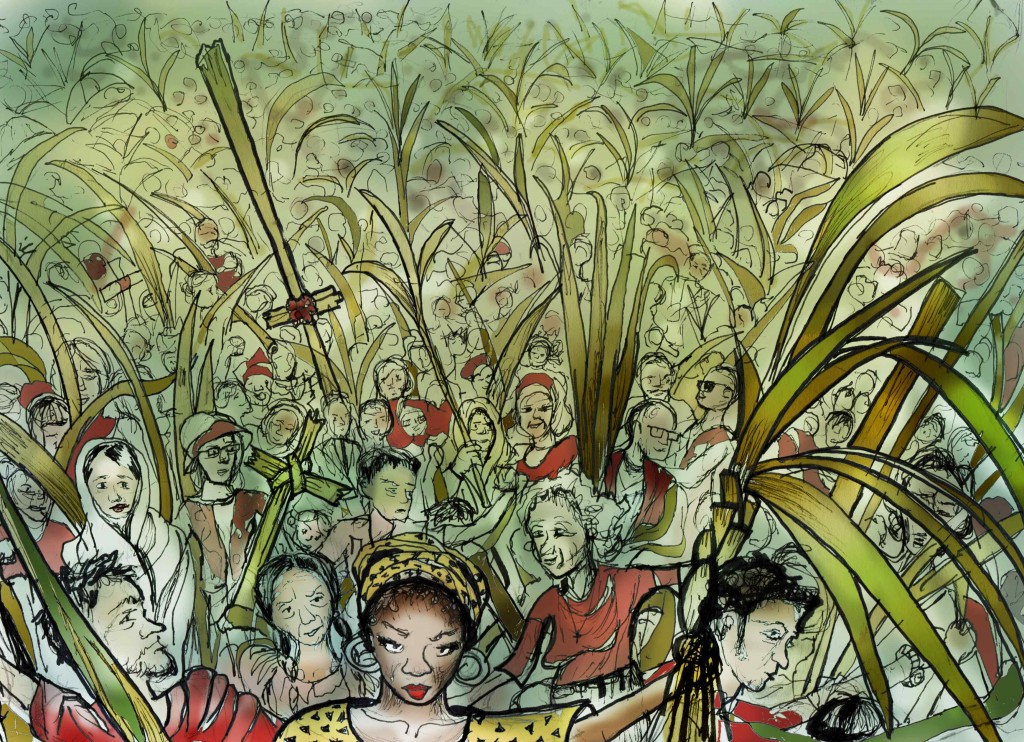Triumph and Rejection
25 March 2018 -Sunday of the Passion / Palm Sunday
We know that Jesus was not simply riding in to Jerusalem to celebrate his messianic leadership.
We know that Jesus was riding in to betrayal and death.
We know that the reality of the reign of Christ would only be fulfilled on the morning of resurrection.
We know that the reign of God cannot be a reality in our world as long as the structures of our society continue to promote fear and hatred and violence.
We know that Christ's life and death and resurrection will continue to mock our society's values until we value human life the way God values it.
We know the triumphal entry into Jerusalem will continue to be an ironic parade until justice flows down like waters and righteousness like an ever-flowing stream.
We know Palm Sunday will continue to be a paradox of meaning and symbol until violence and warfare and power cease to rule our world, and in their place reigns the power of love. –– John H. Barden
Mark 14:1––15:47 or Mark 15:1-39 [40-47]
Having grown accustomed to gospel lessons as short as a few verses and rarely longer than a single chapter, this one Sunday (and Good Friday) we place an extended lesson at the heart of the liturgy. In one way, the sheer length implies the heft and gravity of the day.
. . . Make the Passion itself part of your homily. . . well proclaimed—with more than one reader if possible. Help the readers highlight details through good vocal inflection, pauses, and pronunciation. Keep the congregation involved! Invite them to hold palm branches aloft during the Passion according to centuries old customs.
Advise people clearly on when to stand and provide for standing. . . at least for the section from the sentencing to death to the crucifixion. Liturgical churches will have known the practice of a strong, silent pause for meditation. . . –– Jeffrey VanderWilt
Isaiah 50:4-9a
Hebrew Bible scholars would warn us to carefully interpret these passages with reference to Israel in exile and the postexilic teachings of Third Isaiah. The difficulty with these cautions is that the most ancient strata of Christian oral traditions entirely depend on the direct application of these passages to the interpretation of the meaning, purpose, and consequences of the death of Jesus. It is not that Jesus does not fulfill biblical prophecy in his death, but it is problematic from within the constraints of a historical-critical method, and challenges may emerge within the sphere of Jewish-Christian dialogue. –– Jeffrey VanderWilt
Philippians 2:5-11
The nature and spiritual actions of Christ form the basis for Christians to know and do the right things. The key phrase is “let the same mind be in you that was in Christ Jesus” [linking] the exhortation. . . to the nature of Jesus as one who could have been equal to God, but “emptied himself.” The Greek concept is kenosis . . . that Jesus could have escaped death yet was “obedient to the point of death.” “Taking the form of a slave” uses the term pais, which may mean slave, servant, or young man. –– Jeffrey VanderWilt
John H. Barden, a Presbyterian pastor, received the Angell Award in 2005 from the Presbyterian Writers’ Guild for his book of original folktales, ‘Postle Jack Tales (KiwE Publishing, 2004).
Jeffery VanderWilt, author of Communion with Non-Catholic Christians (Collegville, MN: Liturgical Press, 2003) teaches at Santa Margarita Catholic High School in Southern California.
Homily Service 39, no. 5 (2006): 9-17
